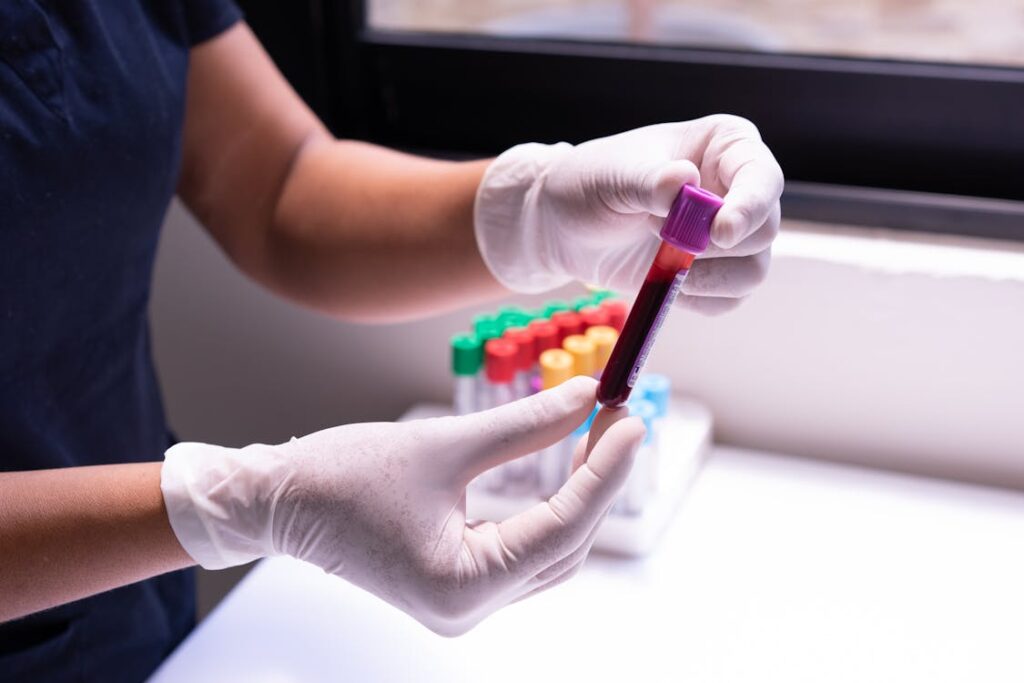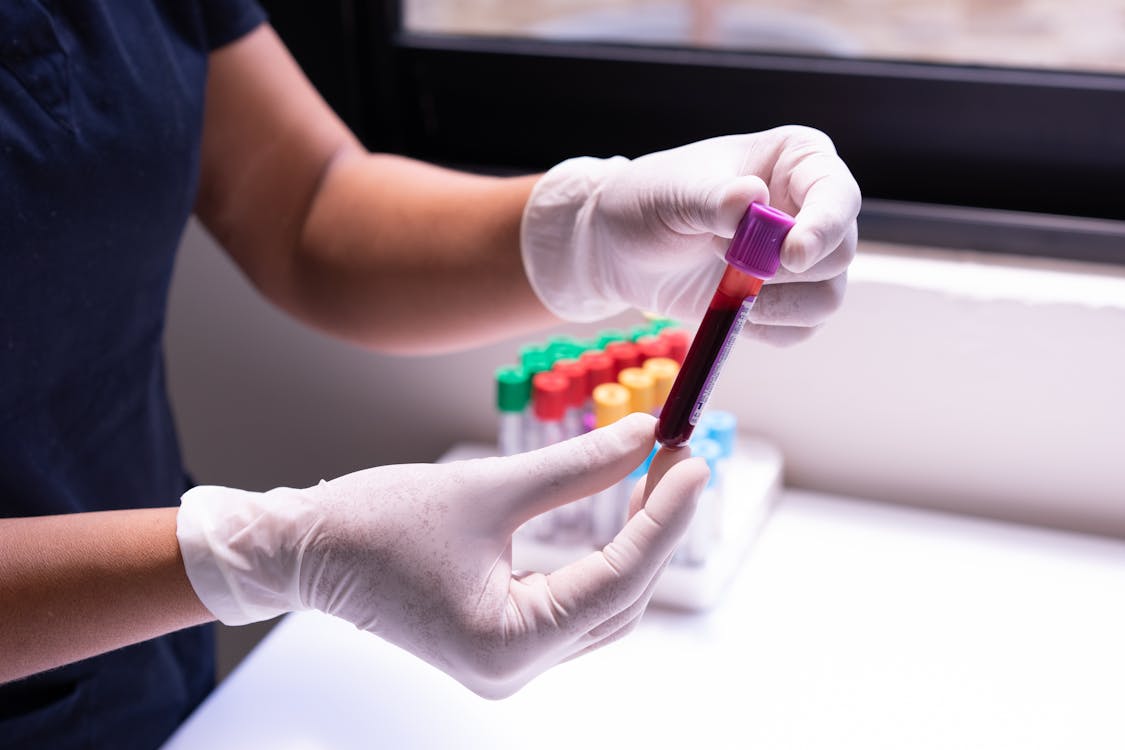How High Hematocrit is Dangerous
Table of contents
Introduction: What is the Hematocrit test?
Hematocrit tests are tests done as a part of a complete blood count test. They measure the percentage of red blood cells in the blood. The hematocrit levels are usually attributed to the red blood count, platelet count and other components of the complete blood count. Eager to learn how high hematocrit is dangerous? Let us discuss the basics. A high hematocrit count in men is one above 48.6% in men and 44.9% in women. This value is considered above normal and may indicate a blood disorder or another medical condition. The normal range of values is 41-50% for men, 36-44% for females, 45-61% for newborns and 32-42% for toddlers. The test can also be referred to as a packed-cell volume test.
How are the hematocrit levels obtained?
Blood tests to find out the hematocrit levels are simple and safe procedures to carry out. The blood is sometimes gotten from a vein, using a needle and put into sample tubes. In other instances, a prick and a drop of blood is all that is needed. The test does not also require any special preparation like fasting which is needed to examine the fasting blood sugar of an individual. There are usually no complications after the test, though some people may feel faint. The healthcare provider should be informed in the case of any issues after the test.

Hematocrit test results
The results from a hematocrit test are reported as a percentage of blood cells that are red blood cells or erythrocytes. The ranges vary substantially with age, race and sex. The definition of this red blood cell percentage may also vary from one medical practice to another. This is because most labs decide what a healthy hematocrit range is based on the population in the given area.
The accuracy of the test results
A few factors can affect the results of a hematocrit test and give more knowledge on how high hematocrit is dangerous. There are certain situations where the hematocrit is not within the typical range but doesn’t mean that the individual is sick. These include:
- Pregnancy, which lowers the hematocrit levels
- Severe dehydration which may raise the hematocrit levels
- Living in high altitudes which raises the hematocrit
- Recent blood transfusion may raise the hematocrit
The healthcare team involved will consider all the possible complicating factors when they are interpreting the results of the hematocrit test. The test may also be repeated if the results are conflicting or give unexpected information.
What can raise the hematocrit levels of an individual?
The following conditions can cause high hematocrit values:
- Polycythemia vera
- Obstructive sleep apnea
- Cancers like leukemia
- Kidney disease
- Right-sided heart failure
- Congenital heart diseases
- Brain stroke
- Anemia
- Deficiency of iron, vit b12 or folate in the blood
- Dehydration
- Hemoconcentration
- Low levels of blood oxygen
- Exposure to very high altitudes
- Preeclampsia
- Chronic obstructive pulmonary diseases
- Testosterone therapy
- Carbon monoxide poisoning
What are the signs that show a high hematocrit level?
The symptoms seen vary depending on the underlying condition that may be causing the issue. Some of the symptoms include:
- Weakness and fatigue – This is usually a physiological reaction to viscous blood, which has difficulty supplying oxygen and nutrients to the rest of the body.
- Headache and dizziness – This occurs when the blood becomes too concentrated due to the rise in red blood cells. High hematocrit levels can lead to headaches and bouts of dizziness as a way to signal the body and a sort of coping mechanism.
- Tachypnea – High hematocrit levels are frequently followed by rapid breathing or tachypnea, which occurs more than 20 times per minute. This is the short-term compensatory reaction of the body in response to the inadequate delivery of oxygen to the cells.
- Blood may become viscous – The blood may clot, lose its fluidity, thicken, or become sticky. This causes the brain to receive less oxygen.
- Bruises – In the case of polycythemia vera, a high hematocrit level can cause bruising. Blood clots are also more likely to form with viscous and concentrated blood. These bruises which are red to violet in color can appear anywhere on the body, and they usually have no overt causes.
- Odd sensations on the skin – When the blood flowing beneath the skin lacks oxygen, it can interfere with the sensory receptor function. There may be odd sensations like itching or a tingling, pricking or burning sensation on the soles of the feet or the palms, this can also be called paresthesia.
- Blurred vision
- Confusion
- Nosebleeds
- Thirst
- Exercise intolerance
- Heart palpitations
- Stomach discomfort
- Dark yellowish and strong-smelling urine
- Reduced urination frequency
- Dry mouth, lips and eyes
How can one lower their hematocrit levels?
We have discussed How High Hematocrit is Dangerous. It is important to know that treating high hematocrit levels involves addressing the underlying issue that caused the increase. A few ways of lowering it include:
- Staying hydrated – Drinking about 8-12 glasses of water a day can help prevent dehydration which causes higher hematocrit levels.
- Antioxidants – Including antioxidants in the diet can help in the protection against free radicals which can then help provide oxygen to the body.
- Quit smoking – Nicotine in cigarettes and other tobacco products reduces the blood flow by altering the oxygen-carrying capacity of the erythrocytes. The body tries to compensate by increasing the level of production of erythrocytes which increases the hematocrit levels. Giving up smoking may help lower hematocrit levels.
- Eat more grapefruit – Eating a while or half a grapefruit can help lower the hematocrit levels. This is because there is a flavonoid called naringin found in grapefruit in high concentrations. This naringin can cause phagocytosis, a process that naturally removes erythrocytes from the blood, converting them to other uses.
- Have moderate exercise sessions – Regular moderate exercise is good for the health and well-being of an individual. The problem lies in overdoing it, which can then lead to an increase in the hematocrit levels.
- Avoid high altitudes – The oxygen concentration is lower at high altitudes than at low altitudes. As an adaptation to this, the bone marrow then produces more erythrocytes to compensate for the low blood oxygen levels in the body. This then results in high hematocrit levels. Areas that are eight thousand feet above sea level are associated with high hematocrit levels. Moving to a lower altitude may help restore the hematocrit to normal levels.
How to increase hematocrit levels?
- Boosting your hematocrit levels starts with simple lifestyle changes that can make a big difference.
- Consider your diet—incorporating foods like spinach, beans, and lean meats can provide your body with the nutrients it needs to produce more red blood cells.
- Remember hydration; drinking plenty of water helps keep hematocrit levels in check. Dehydration can lower them, so staying hydrated is important.
- Regular exercise naturally stimulates your body to produce more red blood cells.
- If you quit smoking, you can significantly improve your hematocrit levels.
- In some cases, medical treatments like iron supplements or medications may be necessary. This is particularly valid in the event that you have a medical condition.
The information provided in this blog is for educational purposes only and should not be considered as medical advice. It is not intended to replace professional medical consultation, diagnosis, or treatment. Always consult with a qualified healthcare provider before making any decisions regarding your health. Read more

